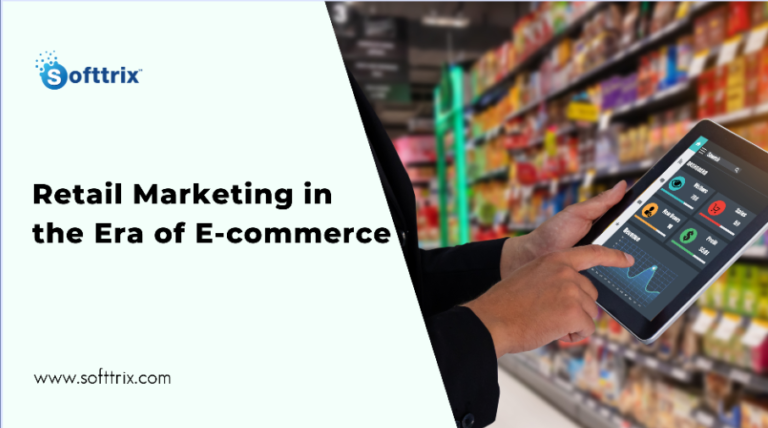E-retail marketing can be described as the strategy used by retailers to create demand for their products in the e-marketplace. It involves advertising products via web-based channels like company websites, social media platforms, e-mails, SEO, and other forms of online advertising.
Critical aspects of retail marketing include:
Digital Presence and Optimization: Some of the objectives that retailers often consider include improving the usability of their websites and implementing good SEO to drive more organic traffic.
Multi-channel Marketing: Utilizing the internet as a web facility and advertising where they can use social networks like Facebook, Instagram, electronic and online shops like Amazon, eBay and applications.
Personalized Marketing: Targeting consumers logically to distinguish them into groups based on their loyalty level, behavior, and buying cycles. Customer
Experience: Striving to create a positive shopping experience, from recognizing the need for certain goods through the actual purchase to the subsequent stages.
Digital Advertising: Using Techniques like Google Paid Ads, Social Media Paid Ads, and Display Paid Ads to target the desired population and check the traffic rate of ecommerce sites.
Content Marketing involves creating and spreading useful and related materials (such as articles, videos, and e-books) to engage the target audience, build credibility, and encourage purchases. Analytics and Insights involve using analytics tools to keep track of customer actions, campaigns, and sometimes sales, which in turn enables retailers to correct their strategies.
Supply Chain and Logistics: Delivery and order-taking require prompt and efficient delivery of the products, as well as the flexibility of delivery procedures that consumers have grown to enjoy when using online shopping.
To sum up, retail marketing today is dynamic, befitting the current technological advances. It emphasizes the digital element in the process, with incessant changes due to emerging e-markets and consumers’ needs.
Challenges in Bridging the Digital Divide in Modern Retail
Bridging the digital divide in modern retail presents several challenges:
Technological Infrastructure: An organization operating in different locations and stores should have proper and stable access to digital tools and platforms for different store sizes.
Skill Gaps: This is a waste of time that could be prevented if the staff was well prepared to learn and implement these technologies to improve the retail processes.
Integration Complexity: Integrating several systems and data sources, such as POS, CRM, and e-commerce, is necessary to create a fully effective solution with a coherent consumer experience.
Cost Constraints: Hedonic pricing control in respect of the cost of implementing and maintaining digital solutions within an organisation, especially for new-generation limited retail stores.
Customer Expectations: Adapting to new trends that are the shift of customer needs related to convenience, individualization and integration of multi-channel strategies.
Data Privacy and Security: Execution of data protection laws and safeguarding of customer information when engaging with them through digital means. Change Management: Addressing the issues associated with change resistance and fostering the culture of innovation and improvement in the organisation.
Competitive Pressure: In order to be able to match up with the major players in business, who in most cases have greater capabilities and time to invest in web-based initiatives. Infrastructure Accessibility: To address the issue of the digital divide, which can exist between a given region or group of individuals and another.
Digital Transformation Strategy: To give an understanding of the concept of designing and actualizing a pathway that outlines the approach to a successful digital transformation that aligns with the organization and its customers, while at the same time resolving internal and external issues. A good example of how the gap in the digital divide can be closed is long-range planning, adequate capital investment in technology and people, and their continuous commitment to innovating due to the current market forces and consumers’ requirements.
What Key Strategies Can You Adopt To Close The Gap Between Offline And Online Marketing?
It is important to understand which strategy can be used here to reduce the gap between offline and online marketing. This means realizing the differences between offline and online marketing and developing strategies that integrate the two into your business. Here are key strategies to adopt:
Omni-channel Marketing: Bring all the touchpoints in-store with branding, messaging, and overall strategy throughout the physical stores, website, social media, Mobile applications.
Online-to-Offline Integration: Encourage people to visit the physical outlet after engaging with the company online through exclusive store incentives, click-and-collect options, or digital touch points.
Offline-to-Online Strategies: For example, when using physical media to reach customers directly, such as through QR codes, in-store ads, or packaging inserts, make sure that they lead the clients to more details or related products on the Internet.
Data Integration: Capture all customer contacts offline and online when dealing with the customer to get all the details.
Localized Marketing: Overlay Internet advertising on localized regions and link it to current or upcoming physical store events. Enhanced
Customer Service: Provide similar service quality when customers interact online and when they come to the store for assistance.
Unified Loyalty Programs: Strong and lasting loyalty programs that customers can access from the company’s website and in stores should be encouraged to use the various platforms.
Augmented Reality (AR) and Virtual Reality (VR): Integrate AR/VR so consumers can shop even when switching between online and physical stores.
Social Proof and User-Generated Content: Customers should be encouraged to share their physical experience of the product by posting on social media, tagging the company, or writing a review, which will increase the company’s internet presence.
Continuous Monitoring and Optimization: Last but not least, managers should continually assess the effectiveness of the lessons obtained from both traditional and new media so as to discover ways of improving its communication and future incorporation.
Therefore, such approaches make sense as they allow businesses to create a smooth and engaging experience for a client with no gap between online and offline operations, which contributes to rising brand awareness and the company’s performance.





